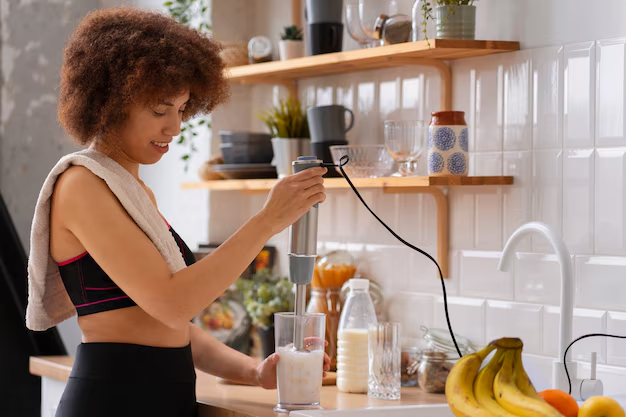Transform Your Freezer into a Refrigerator: A Step-by-Step Guide
Ever found yourself short on refrigerator space before an event or just wished you could have a little extra room for perishables? Turning an unused or spare freezer into a functional refrigerator can be a practical solution for many. Not only does it maximize your storage capacity, but it also repurposes an appliance you might not be using to its full potential. In this guide, we'll explore how to make this transformation efficiently and safely.
🧊 Why Convert a Freezer into a Refrigerator?
Freezers and refrigerators serve different functions, with the former designed to keep temperatures well below the freezing point to preserve food for longer. However, the motivation to switch is gaining popularity for several reasons:
Space Optimization: Many homes have extra freezers, especially chest freezers in basements or garages, that are underutilized.
Energy Efficiency: Running a full refrigerator might be more efficient than operating two separate appliances.
Cost-Effectiveness: Instead of buying a new fridge, converting a freezer can save money and resources.
🔧 Understanding the Conversion Process
Before diving into the conversion process, it's essential to understand a few technical details that ensure the modified freezer functions as desired.
How Does a Freezer Work?
Freezers and refrigerators use similar technology. Both utilize a cooling system of compressors, evaporators, and fans to circulate cold air. The main difference lies in their temperature regulation:
- Freezers: Maintain temperatures as low as -18°C (0°F) to preserve food by stopping bacterial growth.
- Refrigerators: Operate between 0°C to 4°C (32°F to 39°F), ideal for slowing spoilage and preserving perishables.
Key Components Needed
To convert a freezer into a refrigerator, you’ll need to modify the thermostat:
- External Thermostat Controller: This device overrides the freezer's thermostat, allowing it to maintain higher temperatures suitable for refrigeration.
- Temperature Gauge or Thermometer: A handy tool to ensure the interior reaches and maintains desired temperatures.
🛠️ Step-by-Step Conversion Guide
To start this transformation, gather these common household tools and follow our straightforward conversion path.
Step 1: Choose the Right Freezer
The type of freezer matters. Upright models are usually preferable because of their similarity to standard refrigerators in terms of shelving and accessibility. If you have a chest freezer, the conversion is still possible but might need some additional shelving considerations.
Step 2: Purchase an External Thermostat Controller
An external thermostat controller is crucial. It's affordable and widely available, typically used by those who brew beer to maintain precise temperatures. Select a model that is user-friendly with clear instructions.
Step 3: Install the External Thermostat Controller
Installation is typically simple:
Unplug the Freezer: Safely unplugging the freezer prevents any electrical mishaps.
Connect the Thermostat Controller: Plug the controller into your outlet, then connect your freezer plug into the controller's outlet.
Position the Thermostat Sensor: Place the sensor inside the freezer, typically on a central shelf. Ensure it’s not touching any sides for accurate readings.
Set the Desired Temperature: Adjust the settings on your thermostat to the range of 0°C to 4°C (32°F to 39°F).
Step 4: Test and Monitor
The initial testing phase is crucial for ensuring operational efficiency:
Monitor Temperature: Use your thermometer to check that the freezer maintains refrigerator temperatures after adjusting the thermostat.
Check Food Storage Safety: Place foods inside and monitor their condition over several days to ensure consistent refrigeration.
🥩 Practical Uses for Your New Refrigerator
Once your freezer’s transformation is complete, optimally utilize it in various ways:
- Seasonal Overflow: Perfect for holiday season surpluses, party preps, or canning season.
- Specialized Storage: Separate beverages, dairy products, or delicacies like cheeses and wines.
- Emergency Refrigerator: Handy during times of primary fridge malfunction.
⚠️ Safety and Considerations
While this project seems straightforward, safety and practicality should always come first:
- Energy Usage: Monitor power consumption as not all freezers are energy-efficient at higher temperatures.
- Periodic Maintenance: Check seals and thermostat settings regularly to prevent unexpected temperature rises.
🔍 Frequently Asked Questions
Here is a quick roundup of common inquiries related to the freezer conversion:
Will converting my freezer void the warranty? Most likely, altering the thermostat settings could void your appliance’s warranty, especially if it causes mechanical issues.
Is the process reversible? Yes, simply unplugging the external controller returns the freezer to its original function.
Can this method work on all freezers? Generally, yes, but the results might vary depending on the freezer’s age and model. Consistently check temperatures to ensure your food is safe.
📌 Quick Recap & Tips for Freezer Conversion
Here’s a streamlined guide to keep handy during your transformation process:
- Check Your Freezer Type: Ensure it's in good working condition.
- Buy The Correct Equipment: Opt for an easily programmable external thermostat.
- Install & Test Thoroughly: Accurate temperature setting is imperative for food safety.
- Monitor Regularly: Ensure optimal performance and efficiency.
Your converted appliance offers versatile storage, turning your cooling dilemmas into organized opportunities. Whether for event hosting, surplus storage, or simple space optimization, transforming your freezer into a refrigerator can significantly enhance your food preservation capabilities. Embrace this seamless solution and enjoy the satisfaction of resourceful and practical home management.
